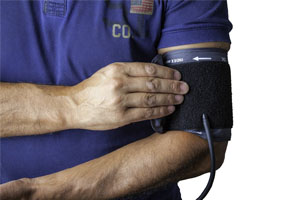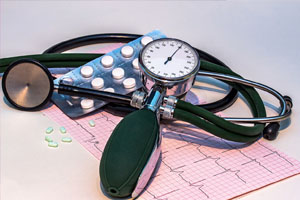Explore the subtle early signs of heart disease – your best defense against cardiovascular risks Learn how to spot these indicators for timely intervention
What are the 3 early warning signs of heart disease? Understanding the symptoms and risk factors of heart disease is essential for early detection and prevention. Heart disease remains a leading cause of morbidity and mortality worldwide, but recognizing the warning signs and taking proactive steps can make a significant difference. In this article, we will explore the key indicators that may signal the presence of heart disease, enabling individuals to seek timely medical attention and adopt heart-healthy lifestyles.

The Importance of Recognizing Early Warning Signs
Recognizing the early warning signs of heart disease is crucial for maintaining good heart health. Heart disease is a leading cause of death worldwide, but it is often preventable and manageable when identified in its early stages. By understanding and being vigilant about the warning signs, individuals can take proactive steps to protect their heart health.
Understanding Heart Disease
Heart disease, also known as cardiovascular disease, is a broad term that encompasses various conditions that affect the heart and blood vessels. It is a leading cause of death worldwide. Heart disease can take many forms, including coronary artery disease, heart failure, arrhythmias, and more. It is crucial to understand the different aspects of heart disease to recognize early warning signs and seek appropriate care and preventive measures.
Three Early Warning Signs of Heart Disease
Recognizing early warning signs of heart disease is essential for timely intervention and prevention. Three common signs to watch out for include:
-
Chest Pain or Discomfort
Chest pain or discomfort, often described as angina, is a common symptom of heart disease. It can feel like pressure, squeezing, or fullness in the chest and may radiate to the arms, neck, jaw, or back.
-
Shortness of Breath
Feeling short of breath during regular activities or even at rest can be an early sign of heart disease. This symptom is more common in heart failure and occurs due to the heart's inability to pump blood effectively.
-
Irregular Heartbeat
An irregular heartbeat or arrhythmia may indicate heart disease. It can manifest as palpitations, a rapid heartbeat, or an irregular rhythm. Arrhythmias can result from various heart conditions.
Diagnosis and Medical Evaluation
Diagnosing heart disease typically involves a series of medical evaluations and tests, which may include:
1.Physical Examination
During a physical examination, a healthcare provider will assess your overall health, check your blood pressure, and listen to your heart for any abnormal sounds or rhythms.
2.Electrocardiogram (ECG or EKG)
An ECG records the electrical activity of the heart. It helps identify irregular heartbeats and other heart-related abnormalities.
3.Blood Tests
Blood tests can measure cholesterol levels, triglycerides, and other factors that can contribute to heart disease. They may also detect inflammation or certain biomarkers.
4.Echocardiogram
An echocardiogram uses sound waves to create images of the heart's structure and function. It helps assess the heart's pumping capacity and can reveal issues with the heart valves.
5.Stress Tests
Stress tests involve physical exertion (e.g., walking on a treadmill) to evaluate how your heart responds to increased workload. It can reveal if there are circulation problems.
Preventing Heart Disease
Preventing heart disease is crucial for maintaining heart health. Here are some strategies to reduce your risk:
-
Healthy Diet
Adopt a balanced and heart-healthy diet that includes fruits, vegetables, whole grains, lean proteins, and limited saturated and trans fats.
-
Regular Exercise
Engage in regular physical activity to maintain a healthy weight and improve cardiovascular health. Aim for at least 150 minutes of moderate-intensity exercise per week.
-
Quit Smoking
If you smoke, quitting is one of the most significant steps you can take to reduce your risk of heart disease. Seek support to help you quit.
-
Maintain a Healthy Weight
Being overweight or obese increases the risk of heart disease. Maintain a healthy weight through a combination of diet and exercise.
-
Manage Stress
Chronic stress can contribute to heart disease. Find healthy ways to manage stress, such as meditation, yoga, or deep breathing exercises.
-
Limit Alcohol Intake
If you consume alcohol, do so in moderation. Excessive alcohol can lead to various health problems, including heart disease.
-
Regular Check-Ups
Visit your healthcare provider for regular check-ups. Monitoring your blood pressure, cholesterol levels, and other risk factors is essential for early detection and intervention.
Frequently Asked Questions (FAQs)
Q1: What are the common risk factors for heart disease?
A1: Common risk factors for heart disease include high blood pressure, high cholesterol levels, smoking, obesity, diabetes, a family history of heart disease, and a sedentary lifestyle.
Q2: Are heart disease and heart attack the same thing?
A2: No, heart disease is a broader term that refers to various conditions affecting the heart. A heart attack, on the other hand, is a specific event that occurs when blood flow to a part of the heart muscle is blocked, usually by a blood clot.
Q3: How often should I have my cholesterol levels checked?
A3: Cholesterol levels should typically be checked every four to six years for adults. However, your healthcare provider may recommend more frequent tests if you have specific risk factors for heart disease.
Q4: Can heart disease be reversed?
A4: Heart disease can often be managed and its progression slowed through lifestyle changes, medications, and medical interventions. While it can be improved, the extent of reversal may vary depending on the individual and the stage of the disease.
Q5: What is a heart-healthy diet?
A5: A heart-healthy diet includes foods low in saturated and trans fats, sodium, and added sugars. It emphasizes fruits, vegetables, whole grains, lean proteins, and healthy fats like those found in nuts and olive oil.










